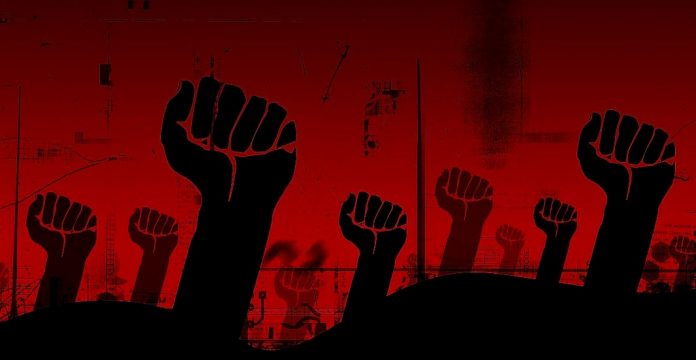By Faisal Fareed, Twocircles.net
The story of UP elections over the years is often cited as a textbook study of how the Congress has faded into oblivion. But at least they have a symbolic presence in the state; with Rae Bareilly and Amethi and their association with the Gandhi Family.
The communists, on the other hand, cannot even claim such comfort. The party, in 1969, had 81 seats; but now, their presence in the UP elections hardly matter, so much so that for the past decade, they have drawn a blank. In fact, the only news that is related to UP communists is related to their office space, a bungalow located right opposite the Vidhan Sabha. Why should a party, that has almost negligible presence in the state, be allotted such prime location?
The change in Communist fortunes may be attributed to, at least in part, the ignorance of communist groups in India and their failure to keep pace with the changing political scenario in the state. Stuck with their own agenda, the communists lost relevance over decades.
The fall of various communist groups in UP began with the advent of caste and religious political polarisation in the state. In 1989, they had eight legislators but the figures dwindled to five in 1991, four in 1993, five in 1996 and two in 2002. After that, none of their candidates won in 2007 and 2012. Their prime time remains the 1969 polls when they won 81 seats.
After 1989, Mandal-inspired politics along with the Ram Mandir movement gained momentum. In the charged scenario, the ideology of communism was lost. Even its legislators like Mitrasen Yadav switched to Samajwadi Party. In this context, Mulayam is said to be behind the scene for including the communist legislators in his party fold thus ending the communist presence in the state. Communists could not withstand the caste and religious political scene and the ground slipped.
Another reason for the wiping away of Communists in UP is due to the absence of industrialisation. UP had few factories and over a period of time, the few industries also closed down. Thus, the trade union movement, often termed as communist nurseries, also died. They had no ground to capitalise and failed to pick other issues which were related to public.
The senior leaders of communist groups also ignored UP totally and were happy hobnobbing with Mulayam at Delhi. They shared the stage with him and supported him, never working towards planning on reviving their parties in the state. Due to this, they may have had good relations with Mulayam but it was at the cost of party cadre in the state which felt dejected with their leaders rubbing shoulders with Mulayam and it failed to gather any courage to launch agitations against him in Lucknow. Such was the pitiable condition of communists that for the by-poll in Ballia Lok Sabha after the demise of Chandrashekhar, CPI did not put up candidates but supported SP.
Even today, a couple of leaders, including females are left in the UP who are more than happy to be in the same frame with Mulayam’s family and complete the formality of their presence by attending debates in TV studios. None of them now even venture their potential constituency.
Perhaps, 2017 assembly polls is a reckoner to them it is already late and better regroup and revive their party.

